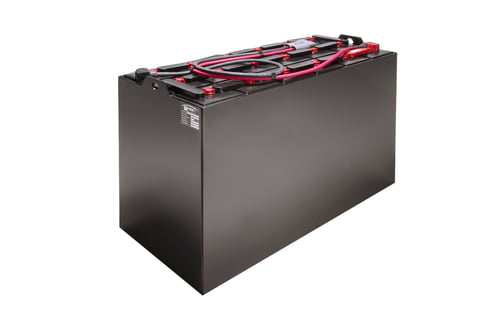
Forklift Batteries Charging Do's and Don'ts
Forklift batteries are vital components in the operation of electric forklifts, providing the energy needed to lift and transport heavy loads. Proper charging of these batteries is crucial not only for the longevity of the battery but also for workplace safety and efficiency. In this article, we’ll dive into the significant aspects of forklift battery charging, emphasizing the do's and don'ts to ensure optimal performance and safety.

Forklift Batteries Charging Do's and Don'ts
When 36 volt flat plate forklift batteries it comes to charging forklift batteries, there’s a lot to consider. This isn't just about plugging in a charger; it's about understanding your equipment, ensuring safety, and prolonging the life of your investment. Below are key do's and don'ts that every operator should be aware of.
Do: Follow Manufacturer Guidelines
Every forklift battery comes with a set of instructions provided by the manufacturer. These 12 volt flat plate forklift batteries guidelines include specific information on charging cycles, recommended chargers, and maintenance tips. Ignoring these recommendations can lead to decreased battery performance or even damage.
Why is it important?
Manufacturer guidelines are designed based on rigorous testing and research. Adhering to them ensures you’re using your forklift batteries as intended, maximizing their lifespan while minimizing risks.
Don't: Overcharge Your Batteries
One common mistake many operators make is overcharging their forklift batteries. Overcharging can lead to overheating, which in turn can cause irreversible damage such as reduced capacity or even thermal runaway—a dangerous situation where the battery can catch fire.
How can you prevent this?
Invest in smart chargers that automatically shut off when the battery reaches full charge. Additionally, monitor charging times closely if you're using older systems without automatic shut-off features.
Do: Regularly Check Battery Fluid Levels
For lead-acid forklift batteries, checking fluid levels is essential. Low electrolyte levels can lead to sulfation—a process that cripples battery performance.
What should you check?
Ensure that electrolyte levels are above the plates but below the vent caps when fully charged. If necessary, top up with distilled water after charging has been completed to avoid dilution of the electrolyte solution during charging.
Don't: Charge in Hazardous Areas
Charging forklift batteries emits hydrogen gas—a highly flammable substance. Therefore, it's vital to charge your forklifts in well-ventilated areas away from potential ignition sources.
What does this mean for your workplace? Establish designated charging areas with proper ventilation systems or exhaust fans to mitigate any risks associated with hydrogen gas accumulation.
Do: Use Appropriate Personal Protective Equipment (PPE)
Safety should always come first! When working with forklift batteries, wearing appropriate PPE—such as gloves, goggles, and face shields—is crucial due to potential acid spills or electrical hazards.
Why bother with PPE?
Accidents happen when least expected; being prepared helps protect against unforeseen incidents like splashes from acidic fluids or electric shocks during maintenance tasks.
Don't: Neglect Maintenance Checks
Regular maintenance checks will not only keep your forklift batteries functioning optimally but will also help identify any issues before they escalate into costly repairs or replacements.
What does maintenance involve? Routine inspections should include checking connections for corrosion, ensuring terminals are clean and tight, monitoring physical condition for cracks or leaks, and verifying that chargers are functioning properly.
Understanding Forklift Battery Types
Before diving deeper into best practices for charging forklift batteries, let's take a moment to understand various types of forklift batteries available in today’s market:
| Battery Type | Description | Pros | Cons | |------------------|------------------------------------------------------|-------------------------------------------|---------------------------------------| | Lead-Acid | Traditional choice; reliable | Cost-effective; proven technology | Heavier; requires regular maintenance | | Lithium-Ion | A newer option; more efficient | Longer life; faster charging | Higher initial cost | | NiCd | Nickel-Cadmium; good for extreme conditions | Resists temperature variations | Memory effect; environmental concerns |
Each type has its unique characteristics that dictate how they should be charged and maintained. Being knowledgeable about your specific battery type helps tailor your approach towards effective charging practices.
Forklift Batteries Charging Do's and Don'ts Recap
In summary:
- Always follow manufacturer guidelines.
- Avoid overcharging.
- Regularly check fluid levels.
- Charge in safe environments.
- Use personal protective equipment.
- Don’t neglect routine maintenance checks.
By adhering to these principles outlined in our "Forklift Batteries Charging Do's and Don'ts," you will greatly enhance both safety procedures and operational efficiency within your workplace environment.
Frequently Asked Questions (FAQs)
1. What is the average lifespan of a forklift battery?
The average lifespan of a well-maintained lead-acid forklift battery ranges from 5 to 7 years. Lithium-ion batteries tend to last longer—upwards of 10 years—due to their efficient design.
2. How often should I charge my forklift battery?
Typically, it's advisable to charge after each use unless specified otherwise by manufacturer guidelines. However, avoid running down the battery completely before recharging whenever possible.
3. Can I use any charger for my forklift battery?
No! It's essential to use chargers specifically designed for your type of battery (lead-acid or lithium-ion) as per manufacturer's guidelines to prevent damage or safety hazards.
4. What signs indicate my forklift battery needs replacing?
Signs may include significantly reduced run time between charges, difficulty holding a charge despite proper maintenance checks or visible swelling/bulging on the casing.
5. Are there any special storage requirements for unused batteries?
Yes! Store unused batteries in a cool dry place at around half-charged status while ensuring they’re regularly checked every few months for fluid levels (for lead-acid types).
6. Is it safe to charge a wet battery?
Never attempt to charge a wet or leaking battery as it poses severe risks including electrical shock or hazardous material exposure!
Conclusion
Charging forklift batteries may seem straightforward at first glance but there’s ample nuance involved that demands attention from operators at all levels—from beginners learning ropes around heavy machinery all way up experienced warehouse staff managing multiple trucks daily!
By following these "Forklift Batteries Charging Do's and Don'ts," you not only ensure increased safety within your workspace but also extend overall equipment life significantly—allowing operations run smoother while maximizing productivity!
Remember this adage: “An ounce of prevention is worth a pound of cure.” So take those extra moments now by implementing best practices today—your future self will thank you!